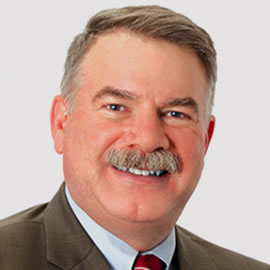‘We can have no “50-50” allegiance in this country. Either a man is an American and nothing else, or he is not an American at all.’ — President Theodore Roosevelt (1858-1919)
I am writing this editorial for the last month of 2022 on Nov. 8, midterm election day. Pam and I are paused in our travels in Florida, so we can perform our duty to vote. We participated in early voting, and I am pleased that the process was smooth and well-managed. Unfortunately, what has not been tranquil is the vitriolic division between the two major political parties (I am a registered independent voter). The myth that the 2020 election was fraudulent and illegitimate has persisted, despite the cornucopian level of empirical evidence stating otherwise. Foreign governments continue to weaponize social media to sow doubt in our election system. Political attack advertisements spend little time on the issues confronting our society in favor of slinging barbs and half-truths at political opponents. The predictable consequence of this debased political behavior is violence, which sadly seems to dominate recent news. As this challenging year ends, the growing divisiveness of our politics does not inspire hope in solving the real issues confronting our democracy.
One of this nation’s greatest strengths was our ability to absorb diverse cultures worldwide under the umbrella of becoming an American. Historically, this nation’s tolerance and acceptance of different skin colors, religious beliefs and social preferences have propelled our society forward at a pace envied by our peers. This is not to say America has not experienced periods where our collective actions have epically failed the promise of our Constitution. Our Founding Fathers provided a framework through which people of diverse ethnic and cultural backgrounds could coexist, contribute to social progress and general defense, seek justice and do so without violence. To be an American means, accepting this basic social structure, even when it results in laws or political outcomes agreed upon by the majority that are not necessarily pleasing to the individual. Perhaps even more importantly, this framework provides a basic set of individual rights that the majority cannot infringe upon. For 245 years, the idea of being an American has sustained this country through many social, economic, and religious trials, slavery, and wars, among many other challenges. However, this idea only works when individuals are willing to place their identity as Americans first and supreme over their social, religious, or ethnic beliefs. Being an American citizen first is not easy and requires constant effort on the part of the individual.
For me, medical practice is one of the best examples of a group placing the needs and ideals of the organization ahead of their own wants and desires. People unfamiliar with wartime medicine often ask me what it was like to treat enemy combatants. These laypersons often assume that some other standard or rule applies to the medical management of enemy casualties compared to the care of our own forces. They are often surprised when I describe how the care of enemy patients is no different from the management of coalition casualties. I doubt any clinician finds this concept strange, since the label of “patient” is the great equalizer within the healthcare world. Categorizations of wealth, ethnicity, sexual preference or religion have no meaning when you become a patient (beyond what diagnostic value such labels may provide). In my various deployments, I often cared for patients whose belief systems and world outlooks were likely diametrically opposed to mine. I am sure some enemy patients would have been happy to take my life, given the opportunity. As a clinician, I had no problem with this incongruence, and I applied myself to the care of these patients with the same commitment I would give any other patient. Why? Because that is what healthcare professionals do and what the ethos of the profession demands. This code of behavior and commitment to the ideals and spirit of the Hippocratic Oath places our profession as the most respected in the social order. A health professional’s commitment to placing the idea of medicine above our own individual wants and desires allows clinicians to interact with other people in ways that even their closest family members could not.
I believe Roosevelt understood that this experiment in American democracy requires the same level of commitment from its citizens to succeed. The simple responsibility to vote is often shirked by many Americans (about half of eligible Americans will vote in the current midterm elections if historic trends persist). Being an American is a verb; it requires active participation and responsible behavior from the individual citizen. Our collective strength rests in our identity first as Americans beyond our individual social, religious, and ethnic differences. It is so very human to have differences of opinion or belief. We must remember that the people representing different opinions or beliefs are still fellow Americans. This understanding must go both ways in groups clashing over divergent ideas for our society to continue.
I am confident that most federal healthcare providers would agree that there are no 50/50 clinicians. Our commitment to patients is a social contract that transcends our differences or disagreement with the patients we care for. For the American experiment to continue, there can be no 50/50 Americans. Instead, citizens must work to understand our collective history, strive to understand the circumstances of other citizens who might have differing opinions and participate in governance. For most of us, that means being willing to place the voting in elections as a priority. I plan to work harder at being an American in 2024, and I encourage you to do the same.

